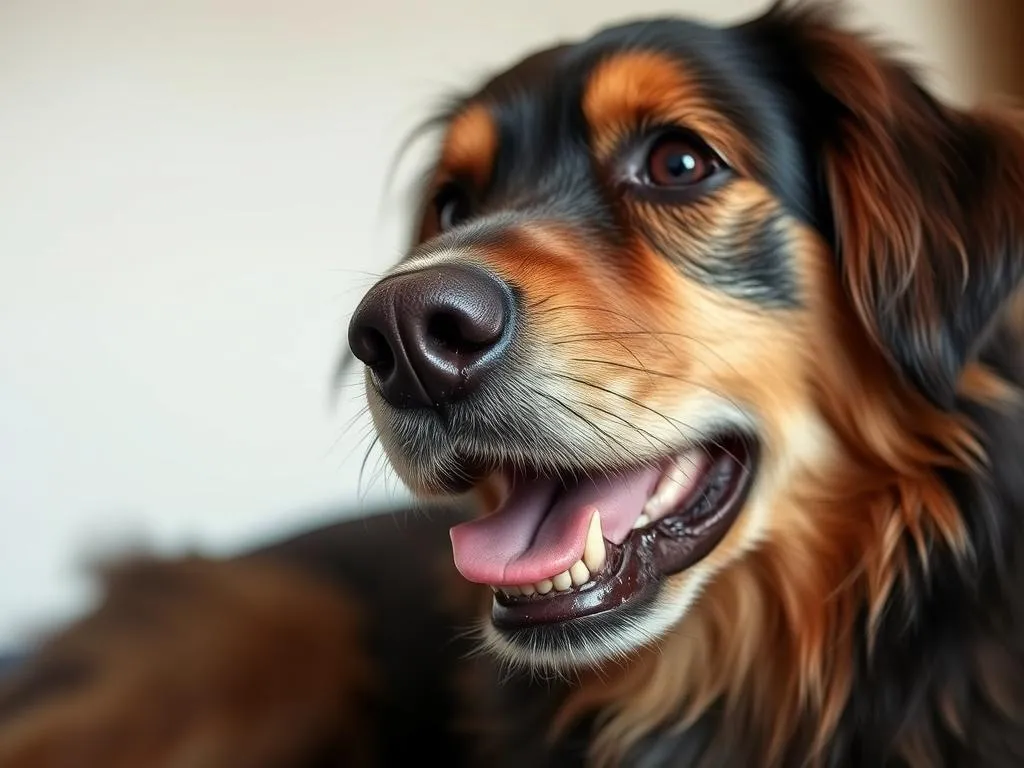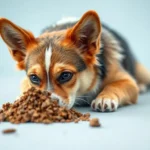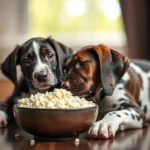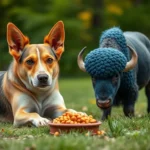
Introduction
Understanding dog nutrition is crucial for ensuring the overall health and well-being of your furry friend. Just like humans, dogs require a balanced diet that includes essential nutrients to thrive. However, sometimes our beloved pets exhibit puzzling behaviors, such as eating hair. This article delves into the motivations behind this behavior and offers insights to help dog owners navigate their pet’s nutritional needs.
Understanding Dog Nutrition
The Basics of Dog Nutrition
Dog nutrition revolves around several essential nutrients: proteins, fats, carbohydrates, vitamins, and minerals. Each plays a specific role in maintaining your dog’s health:
- Proteins are fundamental for tissue repair, muscle growth, and overall body function.
- Fats provide a concentrated source of energy and support cell structure.
- Carbohydrates offer energy and aid in digestive health.
- Vitamins and minerals are crucial for various biochemical processes and maintaining a robust immune system.
A balanced diet is vital; it ensures that your dog receives all the nutrients necessary for optimal growth, energy, and health. Neglecting any of these components can lead to nutritional deficiencies that may manifest in various ways, including behavioral changes.
Common Nutritional Deficiencies in Dogs
Nutritional deficiencies can significantly impact your dog’s behavior and overall health. Some common deficiencies include:
- Protein Deficiency: Can lead to lethargy, poor coat condition, and muscle wasting.
- Fatty Acid Deficiency: Often results in dry, flaky skin and a dull coat.
- Vitamin A Deficiency: Can cause vision problems and immune dysfunction.
- Mineral Deficiencies: Affect bone health, leading to conditions like osteoporosis.
Poor nutrition can lead to various behavioral issues, including anxiety and compulsive behaviors, which may explain why you observe your dog eating hair.
Types of Dog Food
When it comes to dog food, there are several options available, each with its pros and cons:
- Commercial Dog Food: Convenient and often well-balanced. However, some brands may contain fillers and low-quality ingredients.
- Homemade Diets: Allows for control over ingredients but requires careful planning to ensure nutritional balance.
- Raw Diets: Advocates claim they mimic a natural diet. However, these can be risky due to potential bacterial contamination and nutritional imbalances if not properly formulated.
Choosing the right type of dog food is essential for preventing nutritional deficiencies that could lead to behaviors like hair-eating.
Common Dog Behaviors Related to Eating
Reasons Dogs Engage in Pica
Pica is the term used for the behavior of eating non-food items. This condition can stem from various psychological and physiological reasons:
- Nutritional Deficiencies: Dogs may seek out non-food items if their diet lacks certain nutrients.
- Stress or Anxiety: Dogs may eat inappropriate items as a coping mechanism in stressful situations.
- Boredom: Lack of mental stimulation can lead dogs to engage in destructive behaviors.
Understanding the reasons behind pica can provide insights into why your dog might be eating your hair.
Why Do Dogs Eat Hair?
So, why does your dog eat hair specifically? There are several potential motivations:
- Boredom: If your dog lacks sufficient physical and mental stimulation, they may resort to chewing on hair as a form of entertainment.
- Anxiety: Dogs often seek comfort in repetitive behaviors. Eating hair may provide a calming effect for anxious dogs.
- Attention-Seeking: If a dog notices that eating hair elicits a reaction from you, they might repeat the behavior to gain your attention.
- Nutritional Deficiency: Some dogs may instinctively seek out hair if their diet is lacking in certain nutrients, possibly due to the keratin found in hair.
Understanding these motivations is crucial for addressing the behavior effectively.
Other Common Non-Food Items Dogs May Eat
Aside from hair, dogs may consume various non-food items, such as:
- Grass
- Stones and pebbles
- Plastic or rubber objects
- Paper or cardboard
These behaviors often relate to the same underlying issues that lead to hair-eating, including boredom, anxiety, or nutritional deficiencies.
Health Implications of Eating Hair
Potential Health Risks
While occasionally eating hair may not seem alarming, it can pose significant health risks. Some potential issues include:
- Gastrointestinal Blockages: Hair can form hairballs or clumps in the digestive tract, leading to blockages that may require surgical intervention.
- Choking Hazards: Long strands of hair can pose a choking risk, particularly in smaller dogs.
- Nutritional Imbalance: Relying on non-food items can lead to further nutritional deficiencies.
Monitoring your dog’s behavior and health is essential to prevent these risks associated with eating hair.
Signs Your Dog May Have a Problem
If your dog is eating hair regularly, keep an eye out for symptoms that could indicate a health problem:
- Vomiting: Frequent vomiting may suggest a blockage.
- Lethargy: If your dog seems unusually tired or disinterested in activities.
- Loss of Appetite: A sudden decline in interest in food can indicate distress.
- Diarrhea or Constipation: Changes in bowel movements may signal gastrointestinal issues.
If you observe any of these signs, it’s crucial to consult with a veterinarian promptly.
Addressing Hair-Eating Behavior
Nutritional Adjustments
Adjusting your dog’s diet is a critical step in preventing deficiencies that may lead to hair-eating. Some recommendations include:
- High-Quality Dog Food: Invest in a premium brand that meets AAFCO standards. Look for options rich in protein and essential fatty acids.
- Regular Feeding Schedule: Establishing a consistent feeding routine can help regulate your dog’s appetite and nutritional intake.
- Supplements: If you suspect a deficiency, discuss potential supplements with your veterinarian.
A well-balanced diet can significantly reduce the likelihood of your dog engaging in hair-eating behavior.
Behavioral Solutions
Addressing behavioral factors is equally important. Here are some tips to help reduce anxiety and boredom:
- Regular Exercise: Ensure your dog gets ample daily exercise to expend excess energy.
- Mental Stimulation: Engage your dog with puzzle toys, training sessions, and interactive games.
- Positive Reinforcement Training: Teach your dog commands to redirect their attention whenever they attempt to eat hair.
Implementing these strategies can help alleviate the urge to chew on hair and other non-food items.
When to Seek Professional Help
If your dog’s hair-eating behavior persists despite your efforts, it may be time to seek professional help. Consider the following signs:
- Persistent Behavior: If your dog continues to eat hair despite dietary and environmental changes.
- Severe Anxiety or Stress: If your dog shows signs of intense anxiety, such as excessive barking or destructive behavior.
- Medical Concerns: Any health issues that arise in conjunction with the behavior.
Veterinary behaviorists or trained dog trainers can offer specialized assistance to help modify the behavior effectively.
Preventive Measures
Creating a Safe Environment
One proactive approach to reduce hair-eating is creating a safe environment for your dog. Here are some tips:
- Dog-Proofing: Remove any hair sources and other non-food items from areas your dog frequents.
- Regular Grooming: Keep your dog well-groomed to minimize shedding and reduce the temptation to eat loose hairs.
- Provide Chew Toys: Offer appropriate chew toys to satisfy your dog’s natural urge to chew.
Establishing a safe environment can significantly reduce the chances of hair-eating behavior.
Regular Vet Check-Ups
Routine veterinary visits are essential for monitoring your dog’s health and nutrition. Regular check-ups can help:
- Assess Nutritional Needs: Your veterinarian can evaluate your dog’s diet and recommend adjustments as needed.
- Identify Health Issues Early: Early detection of any health concerns can prevent more significant problems down the line.
- Provide Behavioral Guidance: Your vet can offer advice on managing any behaviors that may arise, including hair-eating.
Prioritizing regular vet visits will help you stay on top of your dog’s health and behavioral needs.
Conclusion
Understanding dog nutrition and the various behaviors associated with it is essential for every dog owner. It’s vital to recognize that a dog’s inclination to eat hair may stem from nutritional deficiencies, boredom, or anxiety. By ensuring a balanced diet, addressing behavioral issues, and creating a safe environment, you can significantly reduce this behavior and promote your dog’s overall health. Being proactive in managing your dog’s nutrition and behavior will lead to a happier and healthier companion.









